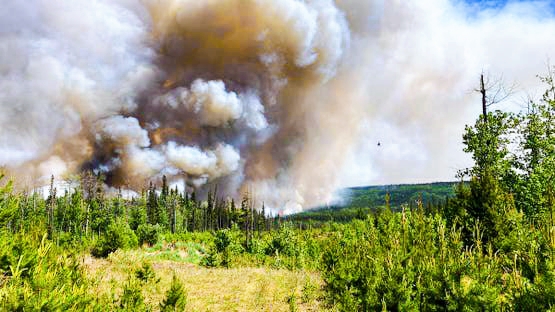The forest fire crisis in Canada continues at an unprecedented pace, causing air pollution levels to rise across large areas of North America.
Thick clouds of smoke and fine particles have swept across large regions of Canada and the northern United States, leading to a sharp deterioration in air quality, affecting major cities such as Canadian Toronto and American Chicago and Milwaukee.
According to the air quality monitoring site "Air Now", air quality in Chicago dropped to "moderate" levels on Sunday morning, while "unhealthy for sensitive groups" levels were recorded in some neighborhoods.
Meanwhile, Milwaukee and central Toronto were classified as having "unhealthy" air quality overall, posing a potential threat to the health of residents, especially those with respiratory diseases.
This deteriorating situation comes amid more than 730 active wildfires in Canada, including 210 out of control, according to the Canadian Wildfire Management Center.
These fires have burned an estimated area of about 6.6 million hectares (equivalent to 16.3 million acres) since the beginning of this season, making them among the largest in the country's modern history.
Large areas of Canada have been affected, starting from the Northwest Territories through Quebec, while warnings have been issued in ten U.S. states stretching from Minnesota to Maine, including parts of northern and western New York, according to a report by Bloomberg.
Weather experts have indicated that current weather patterns are exacerbating the crisis, with Bob Oravec, senior forecaster at the U.S. Weather Prediction Center, stating that "the wind direction is still coming from the west and is not expected to change significantly this week," meaning that the chances of improving air quality in the near term remain low.
The smoke from these fires has covered parts of the United States on several occasions during the spring and summer of this year, and recently reached the famous Lollapalooza music festival in Chicago on Friday, casting a shadow over the festive atmosphere of the event.
This environmental disaster continues to pose significant challenges for the governments of Canada and the United States, raising alarms about the implications of climate change, at a time when discussions about environmental policies and the need to strengthen efforts to contain such disasters in the future are intensifying.

